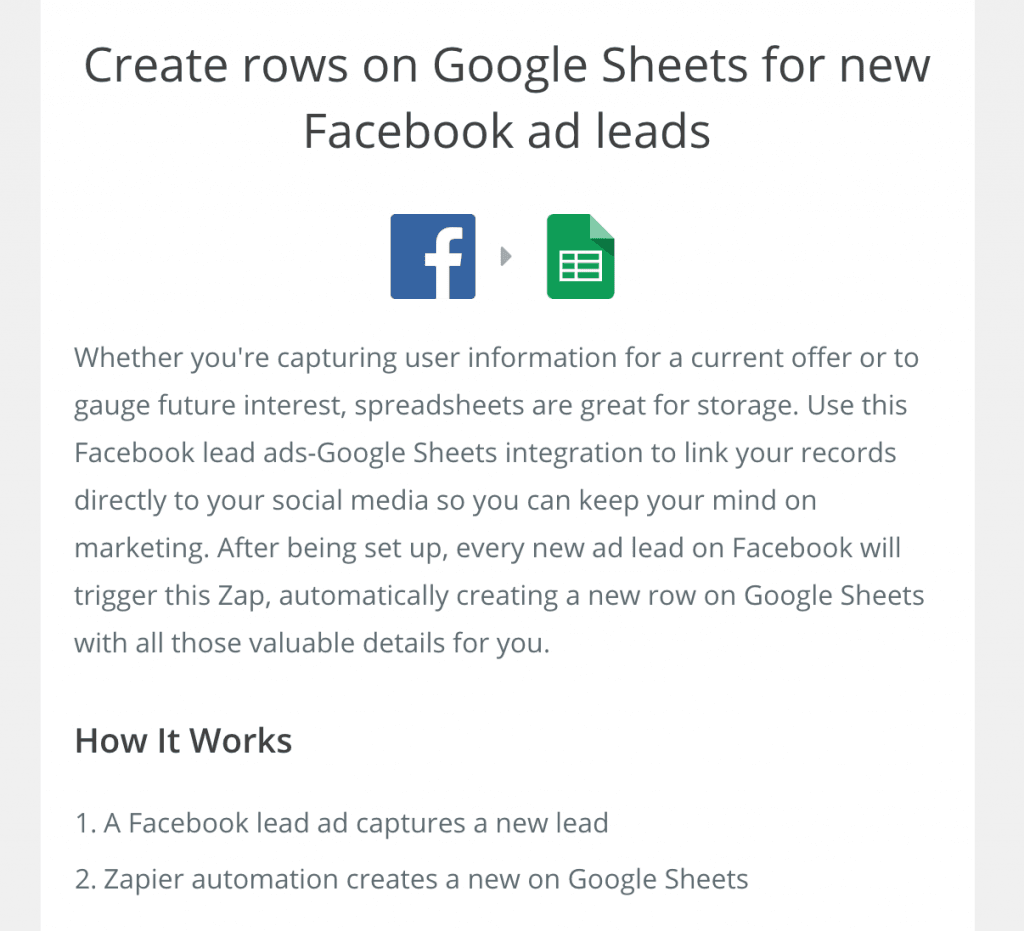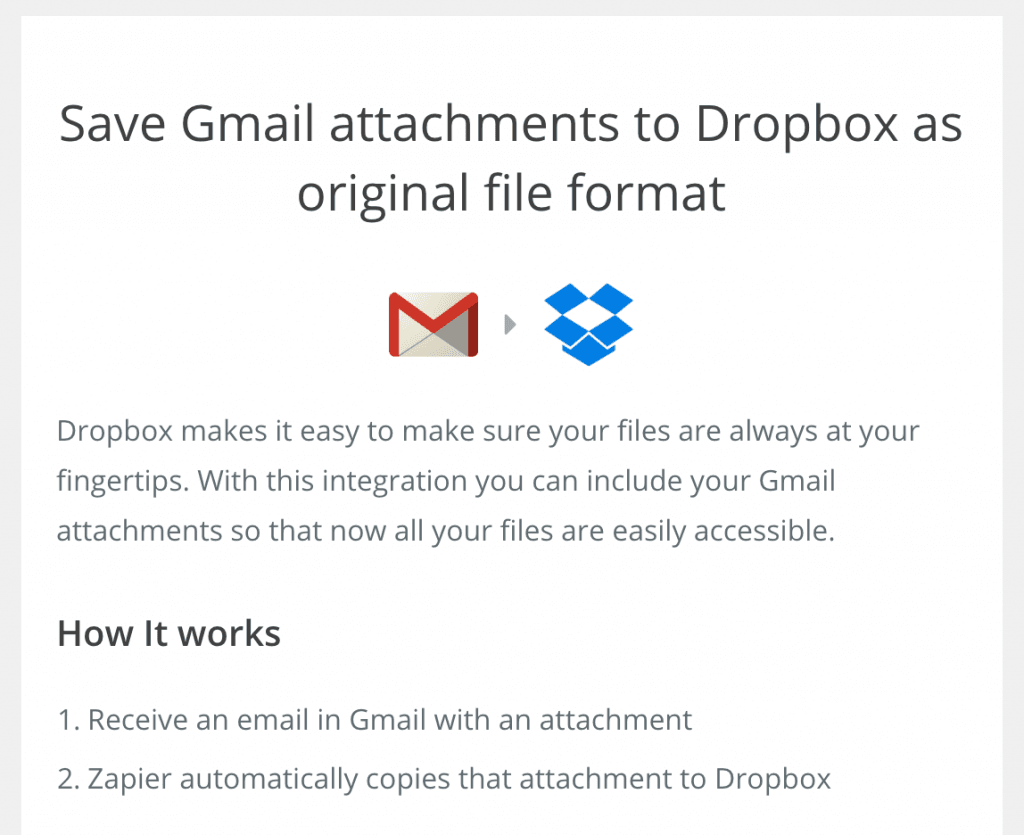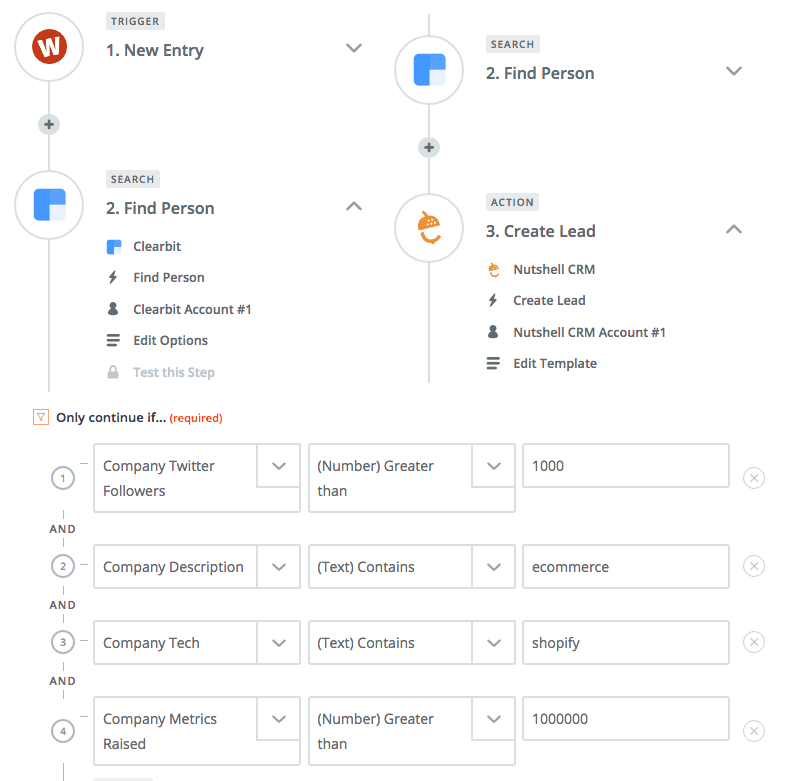8 Ways To Automate Your Analytics with IFTTT and Zapier
IFTTT and Zapier can help turn any manual nightmare into an automated dream.
With the help of IFTTT (If This Then That) and Zapier you can automate all repetitive tasks without the need for any coding. Automation is critical not just for raising efficiency, but also to prevent information and tasks from slipping through the cracks.
While we want you to be doing all of your web analytics within Amplitude, we know other tasks need to be done away from our platform. From emailing reports to collecting data or tracking competitors, IFTTT and Zapier can help turn any manual nightmare into an automated dream.
Zapier
In Zapier, you can integrate your web apps into workflows called Zaps. Zapier is a great tool for business, as you can create complex Zaps and powerful automation, instantly cutting down task time.
Zapier can be difficult to master because it’s built for complicated processes. However, these processes allow for greater customization and specialization to get your data in the exact structure you need. Here we provide some examples of how powerful Zapier can be for your business.
Track Leads From Facebook Ads
Facebook lead ads make it easy for people to sign up for more information about a company. Users can just tap “Subscribe” directly in the Facebook ad and all their contact information is collected immediately.
Tracking all of this information and how many leads your Facebook ads are generating is vital to making sure you reach out to the right people with the right message. But with your ads being displayed all over the place, it’s impossible to really manually track their effectiveness.
Solution: Record lead data on a Google Sheet

This Zap is triggered the moment you get a new lead from your ad on Facebook. It inputs the information into a new row on a spreadsheet in Google Sheets and makes sure you have all the information you need in one place. By setting specific parameters, you can specify what leads you want to be recorded and what information you wish to see.
You can then use this data to analyze quickly which ads were the most effective and with which target audience. This means you can optimize those ads and double-down on that key demographic.
Easily Archive Important Emails
Even in the age of Slack, emails are one of the primary methods of communication among coworkers, especially when passing along important files. If you’ve got a spreadsheet or other analytics report to share, it probably happens over email.
With thousands of emails floating around your archives, it’s a hassle to remember what occurred in an email sent months ago. Digging through your archives to find a specific document is exactly the type of time suck these automation apps were designed to help with.

Solution: Create an analytics report folder in your Dropbox
This Zap is triggered when you assign a label to a specific email. It sends the corresponding email attachment to a previously specified folder in your Dropbox, so everything you need is stored together. You can also set up specific keywords to trigger an attachment to be automatically sent to your Dropbox folder.
When your semi-annual report comes up, you’ll know exactly where all of the reports are located for easy compilation and analysis. This lets you spend more time preparing for your presentation instead of having to spend hours sifting through emails to find the documents you need.
Effortlessly Send Mass Emails To Customers
If you’re involved with sending out data to customers, then running the emails through a help desk solution can make your life a whole lot easier. Help Scout is a great platform to help consolidate all work-related emails in one location and track correspondence with customers.
Email threads are clearly separated, making it easy for you to follow-up with new data or results. However having to go in to write an email every time you have something to report can take up a lot of time and quickly be forgotten if things get busy.

Solution: Zap a Help Scout email from a Google Sheet entry
This Zap automatically starts a new conversation with a customer in Help Scout when you add a new row in a specified Google Sheet. By initiating the task for you, it makes sure you never forget to follow up with your customer. Setting up another action that inputs the relevant information into the email for you can guarantee that your customer is reached with all the right information.
You could even set up a multi-step Zap that automatically adds a row in your Google Sheet when a new analysis is finished, which then triggers the Zap to Help Scout. This way you can focus on completing your analysis without needing to break up your workflow with tedious emails.
Complex Zap: Filter Through Large Data Sets With Clearbit
One of Zapier’s more unique features is the ability to create these complex multi-step Zaps.
Data enrichment tool Clearbit combines massive amounts of data on potential leads to provide you as much information as possible on people signing up for your product. Filtering through all this data can be very time-consuming, especially if the information you’re looking for is very specific.

Solution: Use multiple steps and triggers to parse through data effectively
Using a Zap like this one can not only help simplify the filtering process for better data segmentation, but it can even handle the entire process from gaining a new contact to spitting out specific filtered lists of the data you’re looking for.
Say you collect contacts through a Wufoo form. The first part of your Zap can be to take the email sent through the Wufoo submission and pass it through the Clearbit API to be enriched with data points. Next your Zap can trigger this data to be passed through your Nutshell CRM based on specific qualifications set in your filter.
For the example above, it would continue only if the contact works for an e-commerce company that runs on Shopify and has more than 1,000 Twitter followers that raised more than $1 million in venture funding.
This way, every time you gain a new lead, instead of having to put it through filters yourself, this Zap takes care of the entire process for you and simply hands you data that you can move on to analyzing.
IFTTT
Compared to Zapier, IFTTT focuses on simplicity. Though you can only create one or two step recipes (IFTTT’s version of Zaps), it is much easier to learn to use.
IFTTT provides a large pool of recommended recipes created by other users that can help with menial tasks. Here we offer some suggestions for recipes that are useful for automating your data analysis.
Track Mentions Of Competitors On News Sites
One element of judging your own growth as well as gaining inspiration for new ideas is tracking and collecting data on competitors. Keeping an eye on what is and isn’t working for them can give you a sense of your own strategy. But regularly checking many different news sites to get this information is inefficient and time-consuming.

Solution: Consolidate information on a Google Sheet
This recipe gives an example of how you can use keywords to trigger a new row on a specific Google Sheet to record relevant information. You can apply this to tracking mentions of competitors by using it with a site like Mention.com that sends you emails on specific keywords and topics.
By consolidating all this information to a Google Sheet, you can simply look at this spreadsheet to see what your competitors are doing. This greatly cuts down the amount of time you spend searching and increases the time you have to analyze.
Track Employee Productivity In Trello
Trello is a great tool for project management by allowing users to create cards that can track the progression of big picture ideas, while also recording minute details of how projects progress. The only problem is that there is no consolidated way of tracking productivity for analytic purposes. You can see cards moving, but you can’t tell when and by whom without going in to look at every individual card.

Solution: Trigger a new row on a Google Sheet to analyze progress
This recipe gives an example of triggering a new row in a Google Sheet after a Trello card is added. You can use a similar recipe to take into account every time a new Trello card is created, or a card is moved or updated.
By having this activity trigger a new row on a Google Sheet, you can record what happened and who performed the activity. By having this data all in one place, you can easily determine how people are working and how you can increase productivity.
Keep Track Of Twitter Data
When coordinating a big event like a conference, Twitter hashtags are a great way to generate interest before the event and then to gauge response during and after the conference. The problem is, with Twitter’s constant onslaught of information, it’s a nightmare to collect all of this data manually for analysis.

Solution: Import relevant data to a Google Sheet
This recipe provides a way to track hashtag mentions in a Google Spreadsheet. By extending this to mentions and keywords as well as hashtags, you can track everything that is being said about your event.
Collecting information in one location makes for much easier access to later analyze how often people tweeted, how many people were involved and how social activity compared to last year.
Monitor Reddit For Content Inspiration
Reddit is a great source for content ideas as it has a large user base constantly posting new ideas and thoughts to the site. You can find out what product ideas people are excited about and know what is working, or not working, in your industry. The challenge is digging through all of this information to gather relevant posts you can later analyze.

Solution: Streamline data to your email
This recipe sends you a daily email update with top posts from selected subreddits. By extending this to include posts containing certain keywords or phrases, you can automate the process of searching through these threads for information.
By triggering an email every time a new post is added, you can just refer to your email to look for inspiration rather than having to search through Reddit yourself. This saves you a lot of time to spend conducting analysis for new great content rather than wasting it gathering data.
Automation Can Save You So Much Time
Using IFTTT and Zapier can both make your job easier and improve your analytics by providing filtered information you might have missed if you looked for all of it manually. Automating these processes will make sure no information is lost, and no tasks are forgotten. This way, you can spend your time focusing on the work that matters.
Comments
Ruben Ugarte: Great post Aditya. I love to see more companies talk about how to automate their reports and data collection especially with so many tools like Zapier and IFTT around.
sanghun: Great post

Aditya Vempaty
Former Head of Marketing, Amplitude
As the former head of marketing at Amplitude, he had the privilege of hiring and leading a fantastic team of marketers, designers, and content folks to build a marketing engine that resulted in increasing revenues by 400% in 15 months.
More from Aditya




